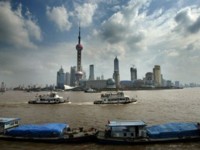Migration Due to Climate Change Demands Attention
 MANILA, PHILIPPINES, February 7, 2011 -
MANILA, PHILIPPINES, February 7, 2011 -Governments in Asia and the Pacific need to prepare for a large
increase in climate-induced migration in the coming years, says a
forthcoming report by the Asian Development Bank (ADB).
Typhoons, cyclones, floods and drought are forcing more and more
people to migrate. In the past year alone, extreme weather in
Malaysia, Pakistan, the People’s Republic of China, the
Philippines, and Sri Lanka has caused temporary or longer term
dislocation of millions. This process is set to accelerate in
coming decades as climate change leads to more extreme weather.
“No international cooperation mechanism has been set up to
manage these migration flows, and protection and assistance schemes
remain inadequate, poorly coordinated, and scattered,” the report
states. “National governments and the international community must
urgently address this issue in a proactive manner.”
ADB expects to issue the report, Climate Change and Migration in
Asia and the Pacific, in early March as part of a broader ADB
project aimed at increasing awareness of, and enhancing regional
preparedness for, migration driven by changing weather
patterns.
The report highlights specific risks confronting climate change
“hotspots”, including megacities in coastal areas of Asia. These
hotspots of climate-induced migration face pressure from swelling
populations as rural people seek new lives in cities. The problem
is compounded by greater dislocation of people caused by flooding
and tropical storms.
Climate-induced migration will affect poor and vulnerable people
more than others,” said Bart W. Édes, Director of ADB’s Poverty
Reduction, Gender, and Social Development Division. “In many
places, those least capable of coping with severe weather and
environmental degradation will be compelled to move with few assets
to an uncertain future. Those who stay in their communities will
struggle to maintain livelihoods in risk-prone settings at the
mercy of nature’s whims.”
On the positive side, the report says that if properly managed,
climate-induced migration could actually facilitate human
adaptation, creating new opportunities for dislocated populations
in less vulnerable environments.
The ADB project, Policy Options to Support Climate-induced
Migration, is the first international initiative that aims to
generate policy and financing recommendations to address
climate-induced migration in Asia and the Pacific.
For further information visit
target=”_blank”>www.adb.org/SocialDevelopment/climate-migration.
Join a
target=”_blank”>live online discussion with experts on 9
February 2011, 15:00 Manila time at About ADB

